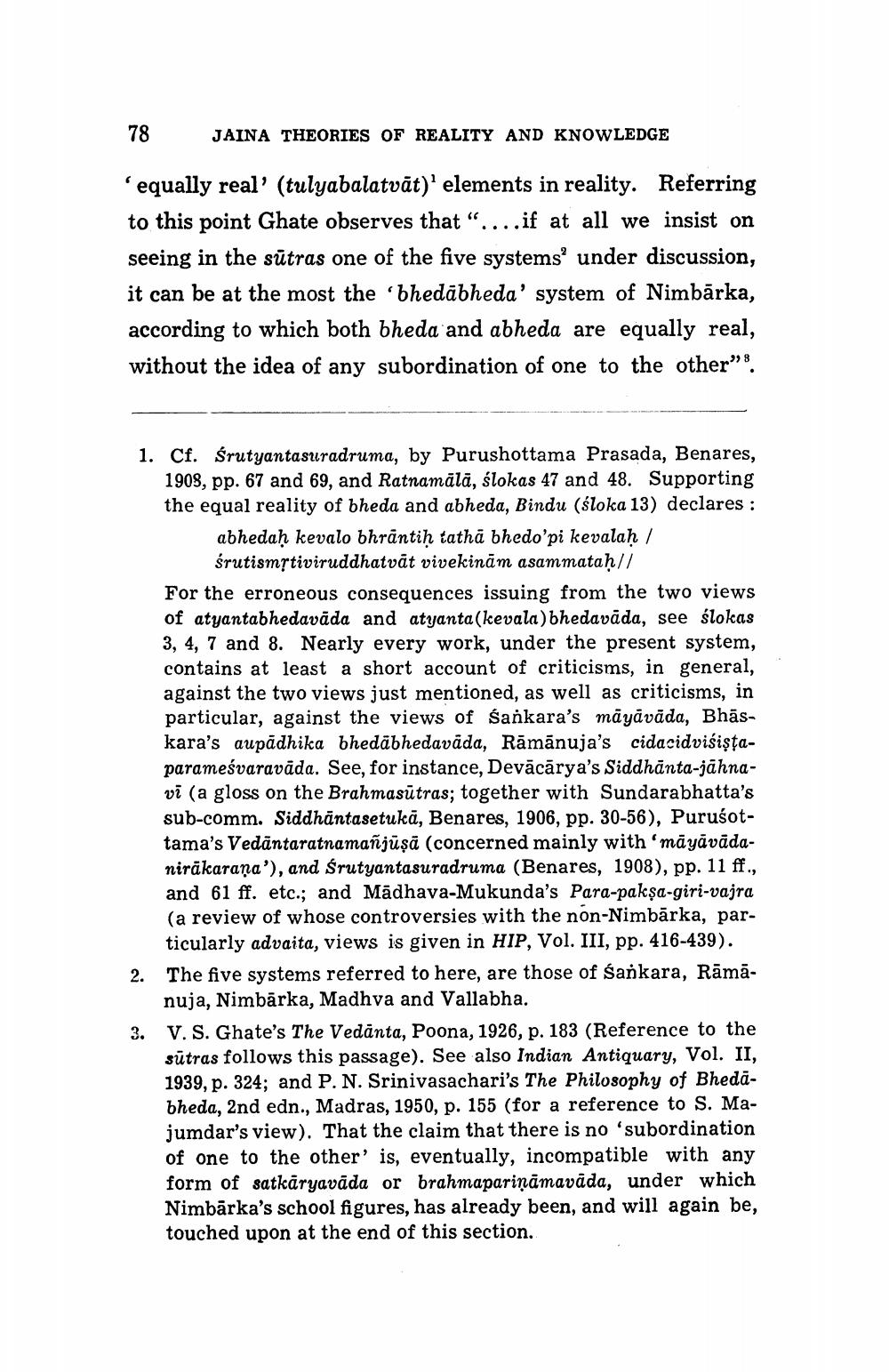________________
78
JAINA THEORIES OF REALITY AND KNOWLEDGE
equally real' (tulyabalatvāt)' elements in reality. Referring to this point Ghate observes that ". "....if at all we insist on seeing in the sutras one of the five systems' under discussion, it can be at the most the 'bhedabheda' system of Nimbārka, according to which both bheda and abheda are equally real, without the idea of any subordination of one to the other"".
1. Cf. Śrutyantasuradruma, by Purushottama Prasada, Benares, 1908, pp. 67 and 69, and Ratnamālā, slokas 47 and 48. Supporting the equal reality of bheda and abheda, Bindu (sloka 13) declares :
3.
abhedaḥ kevalo bhrāntiḥ tatha bhedo'pi kevalaḥ/ śrutismṛtiviruddhatvāt vivekinām asammataḥ//
For the erroneous consequences issuing from the two views of atyantabhedavāda and atyanta (kevala) bhedavāda, see slokas 3, 4, 7 and 8. Nearly every work, under the present system, contains at least a short account of criticisms, in general, against the two views just mentioned, as well as criticisms, in particular, against the views of Sankara's māyāvāda, Bhāskara's aupadhika bhedabhedavāda, Rāmānuja's cidacidvisiṣṭaparameśvaravāda. See, for instance, Devācārya's Siddhānta-jāhnavi (a gloss on the Brahmasutras; together with Sundarabhatta's sub-comm. Siddhāntasetukā, Benares, 1906, pp. 30-56), Purusottama's Vedantaratnamañjūṣā (concerned mainly with 'māyāvādanirākaraṇa'), and Śrutyantasuradruma (Benares, 1908), pp. 11 ff., and 61 ff. etc.; and Madhava-Mukunda's Para-pakṣa-giri-vajra (a review of whose controversies with the non-Nimbārka, particularly advaita, views is given in HIP, Vol. III, pp. 416-439).
2. The five systems referred to here, are those of Sankara, Rāmānuja, Nimbārka, Madhva and Vallabha.
V. S. Ghate's The Vedanta, Poona, 1926, p. 183 (Reference to the sutras follows this passage). See also Indian Antiquary, Vol. II, 1939, p. 324; and P. N. Srinivasachari's The Philosophy of Bhedabheda, 2nd edn., Madras, 1950, p. 155 (for a reference to S. Majumdar's view). That the claim that there is no 'subordination of one to the other' is, eventually, incompatible with any form of satkāryavāda or brahmapariņāmavāda, under which Nimbārka's school figures, has already been, and will again be, touched upon at the end of this section.




